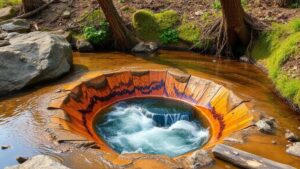Setting Up a Gold Prospecting Lab: Assaying and Metal Recovery Basics
Setting Up a Gold Prospecting Lab: Assaying and Metal Recovery Basics
The art and science of gold prospecting require a solid understanding of assaying and metal recovery processes. Establishing a gold prospecting lab can significantly enhance the efficiency of these processes, ensuring both accuracy and effectiveness. This article explores the essential components and steps involved in setting up an effective gold prospecting laboratory.
Understanding Assaying
Assaying is the process of determining the composition of a mineral sample, specifically the quantity of gold present. Accurate assaying is critical for prospectors, as it helps them understand the viability of a site for gold mining. There are several methods used in assaying gold, including fire assay and atomic absorption spectroscopy.
- Fire Assay: This is the most commonly used technique for gold assaying. It involves melting a sample with fluxes in a crucible, separating the gold from impurities, and then quantifying it. Fire assay is known for its high precision and ability to detect low concentrations of gold.
- Atomic Absorption Spectroscopy (AAS): This method involves dissolving the sample in a solution and determining the concentration of gold by measuring the absorption of light at specific wavelengths. AAS provides quick results and is particularly useful for samples that have already been pre-processed.
Setting Up Your Gold Prospecting Lab
To establish a gold prospecting lab, several key elements must be considered, including location, equipment, and safety protocols.
- Location: The lab should be situated in a well-ventilated area to minimize exposure to dust and harmful chemicals. Proximity to gold prospecting sites can enhance operational efficiency.
- Equipment: Essential equipment includes a furnace for fire assay, a balance for weighing samples, and appropriate glassware for chemical assays. Also, protective equipment such as gloves, goggles, and fume hoods are critical for safety.
Essential Equipment and Tools
Investing in quality equipment is paramount for accurate results. The following tools are essential for any gold prospecting lab:
- Analytical Balance: A high-precision scale is necessary for weighing samples accurately.
- Furnace: A laboratory-grade furnace is required for executing fire assays, capable of reaching temperatures above 1,000 degrees Celsius.
- Crucibles: These are necessary for containing samples during the fire assay process.
- Chemical Reagents: Chemicals like sodium carbonate and borax are commonly used as fluxes in the fire assay process.
Safety Protocols in the Laboratory
Prioritizing safety in the laboratory is essential, given the hazardous nature of some chemicals used in assaying. Key safety protocols include:
- Personal Protective Equipment (PPE): Ensure all personnel wear protective gloves, lab coats, and safety goggles.
- Ventilation: Use fume hoods to handle volatile substances and maintain air quality.
- Emergency Procedures: Establish and train staff on emergency procedures for spills and accidents.
Metal Recovery Techniques
Once gold has been successfully assayed, the next phase involves metal recovery. Various methods can be employed, including gravity separation, flotation, and leaching.
- Gravity Separation: This method uses the difference in density between gold and other materials, typically utilizing equipment like jigs and spirals to separate gold from its ore.
- Flotation: This technique involves adding chemicals to a slurry that selectively binds to desired minerals, allowing them to float to the surface for collection.
- Leaching: This process dissolves gold in a solution, often using cyanide or other chemicals. Although highly effective, it requires careful handling due to the toxicity of the agents involved.
Real-World Applications and Case Studies
Numerous case studies illustrate the successful establishment of gold prospecting labs. For example, Gold Fields, a global mining company, has implemented advanced assaying techniques to optimize their exploration projects. By utilizing modern technology, such as automated systems for sample preparation and analysis, they increased their efficiency by 30% while reducing operational costs.
Another case is Barrick Gold Corporation, which has invested in environmental and safety standards in their labs. By adhering to strict safety protocols, they have minimized workplace accidents, enhancing both productivity and employee morale.
Actionable Takeaways
Setting up a gold prospecting lab involves understanding both assaying techniques and metal recovery processes. Key steps include:
- Investing in essential laboratory equipment and safety measures.
- Useing various assaying methods to ensure accurate gold content analysis.
- Adopting safe metal recovery methods to maximize yield while minimizing environmental impact.
By following these guidelines, prospectors can establish a laboratory that not only meets industry standards but also enhances their gold prospecting endeavors effectively.



